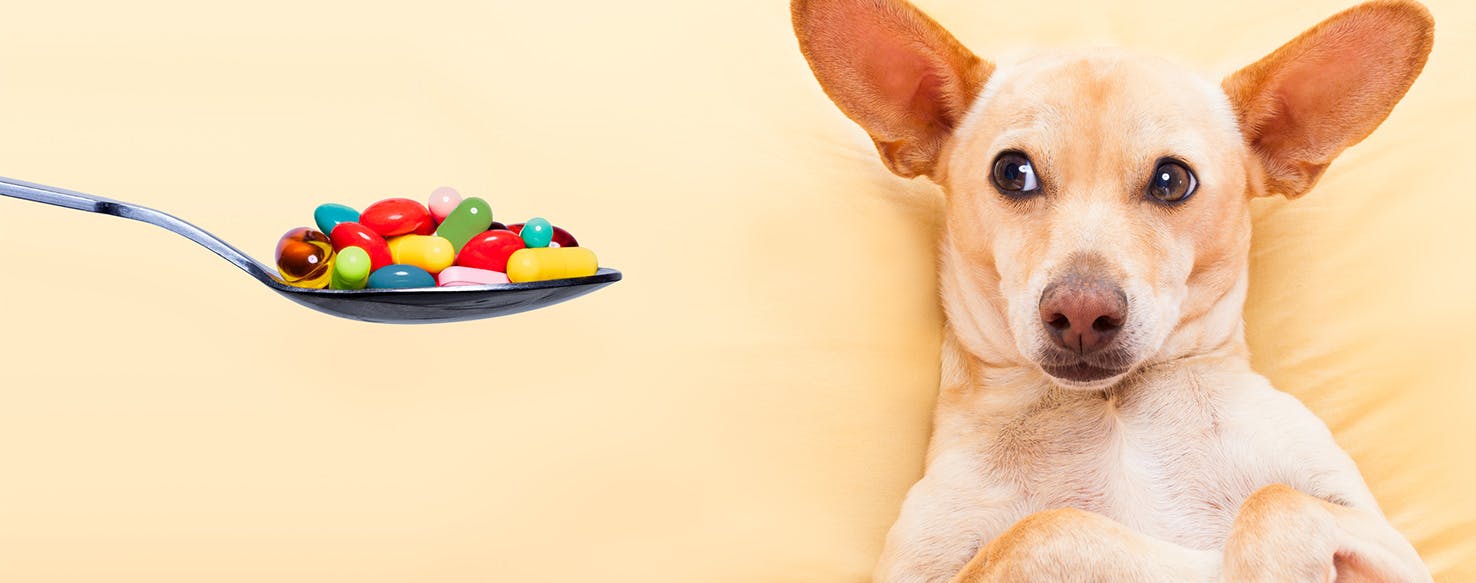- Home
- The Daily Wag!
- Senses
- Can Dogs Smell Fentanyl?

Just as drug dogs are trained to sniff out marijuana, crack, heroin, and more, they're also being trained to set their sniffers on fentanyl.
If you're wondering what fentanyl is and why dogs are sniffing it out, allow us to explain.
Fentanyl is a powerful synthetic opioid that is super similar to morphine - but it's about 50 to 100 times more potent. This is a prescription drug that is used to treat patients with chronic pain who are physically intolerant to other types of opioids. Why is this bad?
Unfortunately, people use these drugs illegally and not for medical purposes and the drugs are wildly unpredictable and can cause overdose and death after just one use. But dogs who are specially trained are being used to sniff out the bad drugs and report them to the police. How do dogs sniff out fentanyl and how are they trained to do it? We've got all the info you need here!
When it comes to sniffing out drugs, specially trained dogs will give you super specific signals. For example, a dog who has been trained to sniff out fentanyl might scratch at the spot where they find it, paw at it, or even sit right down in front of the area without saying a word. They're also known to bark, whine, whimper, or howl if they find the scent they're looking for.
Dogs who aren't trained to detect drugs but pick up on a weird scent might try to alert you to the substance by sniffing their noses high in the air, or following a scent with their noses pressed to the ground. Additionally, your dog might ignore you, other people, and dogs around them in order to hunt down the source of the scent. They might naturally paw, claw, bite, or scratch at where the scent is coming from to bring your attention to it, too.
Body Language
Unfortunately, if your dog accidentally ingests fentanyl, it could be more than just traumatic, it could be fatal. Here are a few signs to watch out for if you think your dog got into some fentanyl:
- Whining
- Weakness
- Whimpering
- Tail Tucking
- Pupils Dilated
- Whale Eye
Other Signs
Here are a few other signs to look out for:
- Diarrhea
- Slow Breathing
- Stopped Breathing
- Coma
- Lethargy And Sedation
- Vomiting
With the capabilities of dogs' noses, it's no surprise that people have quickly caught on to implementing dog skills into our daily activities. It should come as even less of a surprise that law enforcement, government, and military organizations use dogs to help sniff out important things like drugs, bombs, guns, and more.
One of the first instances of this was in the late 1880s when Bloodhounds were used by the London police force to help sniff out and capture Jack the Ripper. Another well-known instance of this in history is when the US military used dogs to sniff out bombs laid out by the Germans in North Africa during World War II.
Let's talk noses for a second. Understanding your dog's nose will give you a much better grasp on how drug detection dogs are able to sniff out fentanyl. Dogs use their wet, spongy noses not just to sniff, but to capture scent. Once air enters their nostrils, it encounters folds of tissue that help to divert air into two separate channels - one for breathing and one for smelling.
Dogs don't just have us beat on airway channels though, they also have up to 300 million olfactory receptors on their noses. To put that into perspective, humans have about 6 million. Additionally, their olfactory cortex, which leads their brain function, is about 40 times greater than humans, too. This ensures that dogs have an acute sense of smell that beats humans out by about 10,000 - 100,000 times.
Contrary to what you might think, if a dog is able to detect drugs, the pup isn't addicted to and doesn't crave the taste of drugs. Instead, they've been highly trained to seek out the smell and associate that smell with their favorite toy. If you're interested in getting your dog certified to be a drug-detecting dog, we encourage you to work with a licensed trainer who can help you make sure your dog is in tip-top shape.
If you'd like to just train your pup to detect stuff at home with the power of his sniffer, then we can give you a few tips to help you train your pooch to be the best pup detective he can be. First, introduce the idea of play as a reward. Make sure your dog understands basic obedience commands, and when he or she does the correctly, give your dog a toy as their reward.
As soon as your dog understands that a good thing gets them playtime, introduce the next step - hiding the playtime toy from them. When your dog finds the toy, reward them with - you guessed it - playtime! Once your dog has mastered this, introduce the scent with the toy. Hide the particular scent you want your dog to detect with the toy and reward your pup with play time when they find it.
Gradually, make the hiding spots more difficult and remove the toy from the equation so your dog is simply sniffing out the particular scent. As always, reward your dog with the toy when they accomplish this task.
Have questions or concerns about your pet?
Chat with a veterinary professional in the Wag! app 24/7.
Get Vet ChatWritten by a Great Dane lover Hanna Marcus
Veterinary reviewed by:
Published: 04/27/2018, edited: 04/06/2020
More articles by Hanna Marcus

